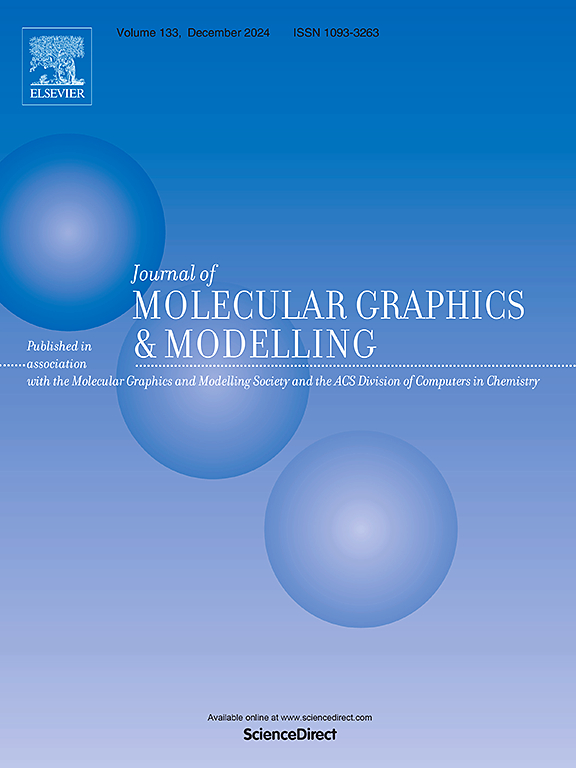Exploring the capability of tetra-penta-octagonal (TPO) graphene as anode material for sodium storage via DFT and AIMD calculations
IF 3
4区 生物学
Q2 BIOCHEMICAL RESEARCH METHODS
引用次数: 0
Abstract
Batterie energy storage systems (BESSs) have a critical role in today's human society. Sodium-ion batteries (SIBs) have been introduced as potential BESSs for human demands. Herein, we probed the sodium storage characteristics of tetra-penta-octagonal (TPO) graphene for SIBs using DFT and Ab Initio Molecular Dynamics (AIMD) methods. The projected density of states (PDOS) profiles indicate a non-covalent interaction between sodium and host that is critical for reversible adsorption of sodium. Climbing image (CI-NEB) calculation reveals a low diffusion energy barrier of 0.037–0.058 eV, suggesting efficient sodium ion mobility for fast charge technology. Theoretical calculations predict a high capacity of 781 mAh/gr which is higher than many other 2D materials. An average open-circuit voltage (OCV) of 0.98 V shows that this structure works within the appropriate operating voltage range of SIBs. AIMD calculations illustrated that the fully adsorbed structure remains stable at 300 K.

通过离散傅里叶变换(DFT)和AIMD计算,探索了四五八边形(TPO)石墨烯作为钠存储负极材料的性能
电池储能系统(bess)在当今人类社会中发挥着至关重要的作用。钠离子电池(SIBs)作为潜在的bess已被引入人类需求。本文采用离散傅里叶变换(DFT)和从头算分子动力学(AIMD)方法研究了sib中四五八边形(TPO)石墨烯的钠存储特性。投影态密度(PDOS)谱显示了钠与宿主之间的非共价相互作用,这对钠的可逆吸附至关重要。爬升图像(CI-NEB)计算显示,其扩散能垒较低,为0.037 ~ 0.058 eV,表明钠离子在快速充电技术中具有高效的迁移能力。理论计算预测其容量为781 mAh/gr,高于许多其他二维材料。平均开路电压(OCV)为0.98 V,表明该结构在sib的适当工作电压范围内工作。AIMD计算表明,完全吸附的结构在300k时保持稳定。
本文章由计算机程序翻译,如有差异,请以英文原文为准。
求助全文
约1分钟内获得全文
求助全文
来源期刊

Journal of molecular graphics & modelling
生物-计算机:跨学科应用
CiteScore
5.50
自引率
6.90%
发文量
216
审稿时长
35 days
期刊介绍:
The Journal of Molecular Graphics and Modelling is devoted to the publication of papers on the uses of computers in theoretical investigations of molecular structure, function, interaction, and design. The scope of the journal includes all aspects of molecular modeling and computational chemistry, including, for instance, the study of molecular shape and properties, molecular simulations, protein and polymer engineering, drug design, materials design, structure-activity and structure-property relationships, database mining, and compound library design.
As a primary research journal, JMGM seeks to bring new knowledge to the attention of our readers. As such, submissions to the journal need to not only report results, but must draw conclusions and explore implications of the work presented. Authors are strongly encouraged to bear this in mind when preparing manuscripts. Routine applications of standard modelling approaches, providing only very limited new scientific insight, will not meet our criteria for publication. Reproducibility of reported calculations is an important issue. Wherever possible, we urge authors to enhance their papers with Supplementary Data, for example, in QSAR studies machine-readable versions of molecular datasets or in the development of new force-field parameters versions of the topology and force field parameter files. Routine applications of existing methods that do not lead to genuinely new insight will not be considered.
 求助内容:
求助内容: 应助结果提醒方式:
应助结果提醒方式:


